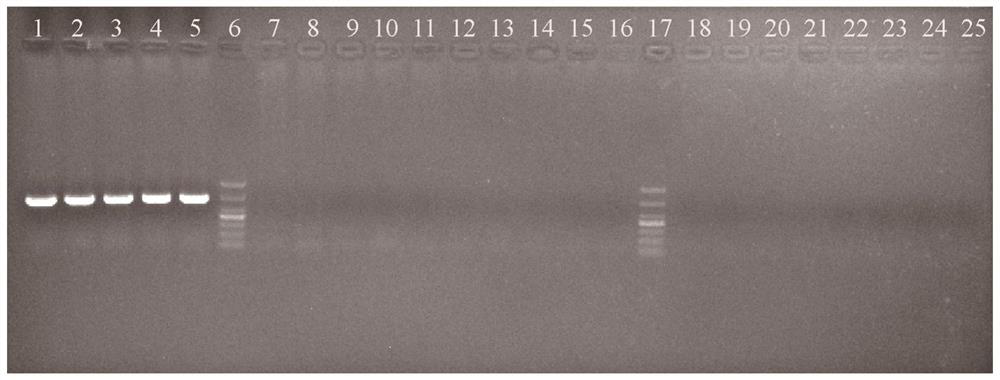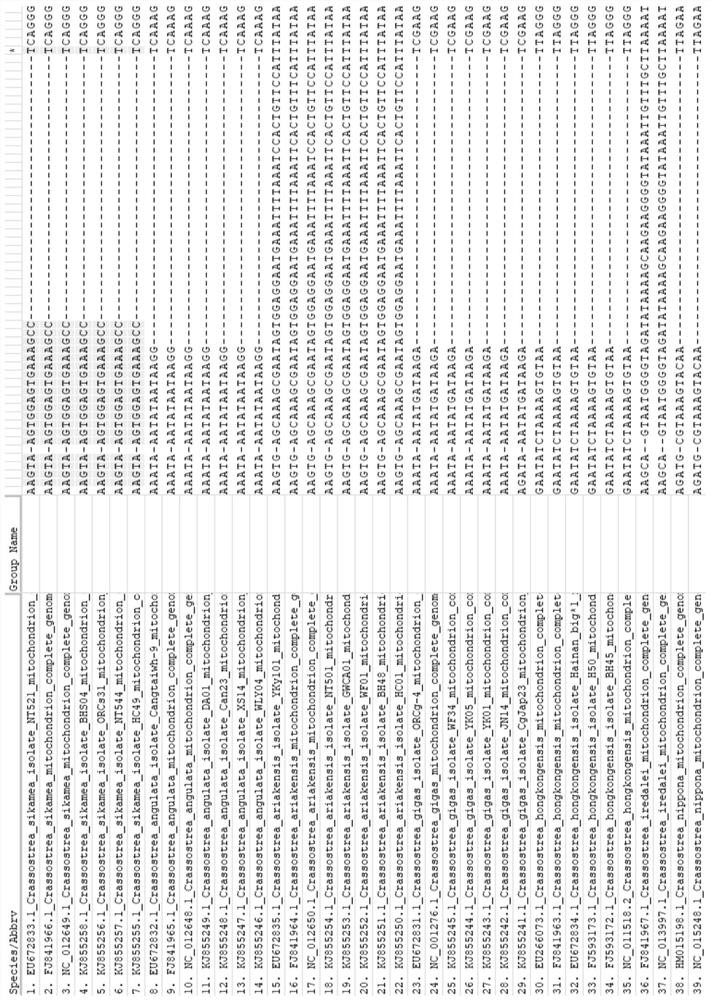The Characteristic Sequence, Specific Identification Primer and Identification Method of Oyster Kumamoto
A Kumamoto oyster and identification method technology, applied in biochemical equipment and methods, microbe determination/inspection, DNA/RNA fragments, etc., to achieve consistent sequencing verification results, easy operation, and high specificity
- Summary
- Abstract
- Description
- Claims
- Application Information
AI Technical Summary
Problems solved by technology
Method used
Image
Examples
Embodiment 1
[0026] a) Sample collection
[0027] The long oysters cultured in the Qingdao sea area, the Fujian oysters cultured in the Fujian sea area, the near river oysters and Hong Kong oysters cultured in the Guangdong sea area, and the Kumamoto oysters cultured in the Ningbo sea area of Zhejiang were collected. 30 oysters were randomly sampled from each location, and the adductor muscles were released after dissection. Put it into a cryopreservation tube, freeze it in liquid nitrogen and store it in a -80°C refrigerator;
[0028] b) Extraction of DNA
[0029]1) Take about 20 mg of tissue from each oyster individual in a 1.5 mL sterilized centrifuge tube, and use a DNA kit to extract DNA to obtain a DNA stock solution;
[0030] 2) Perform 1.2% agarose gel electrophoresis on the extracted DNA stock solution to detect the integrity of the DNA, and use Nanodrop to detect the concentration and purity of the DNA;
[0031] 3) Dilute the extracted DNA stock solution to 1-10ng / μL with ste...
Embodiment 2
[0039] a) Sample collection
[0040] Collect intertidal oyster samples from three bays along the coast of Zhejiang—Xiangshan Bay, Sanmen Bay, Yueqing Bay, and Zhangzhou, Fujian. 30 oysters were randomly selected from each location. After the oysters were dissected, the adductor muscles were quickly frozen in liquid nitrogen at -80°C Store in refrigerator for subsequent verification;
[0041] b) Extraction of DNA and molecular identification of oyster species
[0042] Use the DNA kit to extract DNA according to the instructions. After checking the purity and concentration of the DNA, perform MNR and COI sequence amplification. After the PCR product is sequenced, the NCBI Blast is used to determine the oyster species, mainly Kumamoto oyster and Fujian oyster (Yueqing Bay only takes Kumamoto oyster Oyster);
[0043] c) PCR amplification verification of specific primers
[0044] For oysters from the above four locations, 3 oysters were randomly selected from each species for th...
PUM
 Login to View More
Login to View More Abstract
Description
Claims
Application Information
 Login to View More
Login to View More - R&D
- Intellectual Property
- Life Sciences
- Materials
- Tech Scout
- Unparalleled Data Quality
- Higher Quality Content
- 60% Fewer Hallucinations
Browse by: Latest US Patents, China's latest patents, Technical Efficacy Thesaurus, Application Domain, Technology Topic, Popular Technical Reports.
© 2025 PatSnap. All rights reserved.Legal|Privacy policy|Modern Slavery Act Transparency Statement|Sitemap|About US| Contact US: help@patsnap.com



